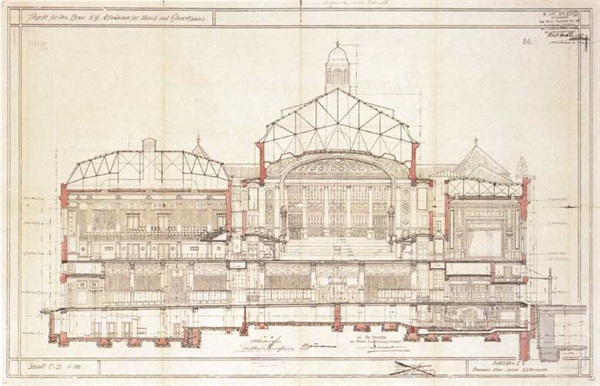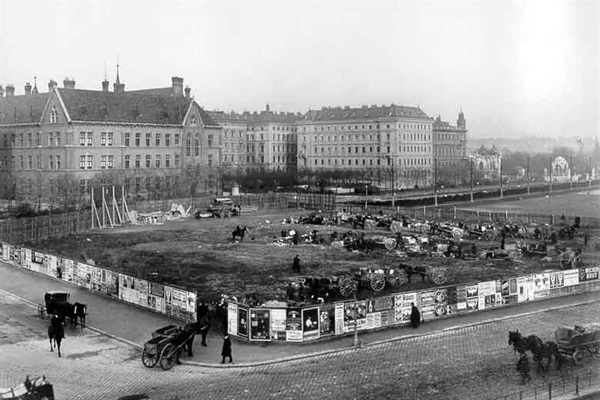
Schnitt durch das Wiener Konzerthaus, Planansicht, 1911

Bauplatz des Wiener Konzerthaus, 1900
Architecture. The Building
When, in 1913, the Wiener Konzerthaus was officially opened after only two years in construction, it was one of the most modern buildings in the Danube Monarchy. Built by the renowned theatre architects Ferdinand Fellner and Hermann Helmer in co-operation with Ludwig Baumann, it set new standards for its architecture, visitor-friendly atmosphere, construction technology and modern facilities. The interior's design testified to the architects' wealth of experience. The entrance hall and staircases were specially constructed to allow a free flow of around 4,000 people, while the three halls – all of which are on the same level but are acoustically separated from each other – can be used individually, or together, for different events. The acoustics and atmosphere of the building lent themselves to a broad range of cultural events, while the buffet, café and three restaurants satisfied all the gastronomic and social claims of modern concert management. The spacious and comfortable atmosphere of the building, which constituted a novelty in Vienna’s traditional musical life, delighted audiences and critics alike.
Architecturally the Konzerthaus presented a rare combination of Historism, Secessionism and Art Nouveau styles. The high quality of the building's construction made few alterations necessary in the course of the years and these were done in such a way as to largely retain the Konzerthaus's original state. The preservation of the building was also central to the complete overhaul which took place from 1998 to 2001. The historical structure was partly reconstructed and partly renovated, and the building was equipped with the latest technology and a fourth concert hall (the Berio-Hall). Thanks to the careful and responsible treatment of its architectural heritage the Wiener Konzerthaus can today be regarded as one of the most modern concert houses in the world while retaining its historical roots.